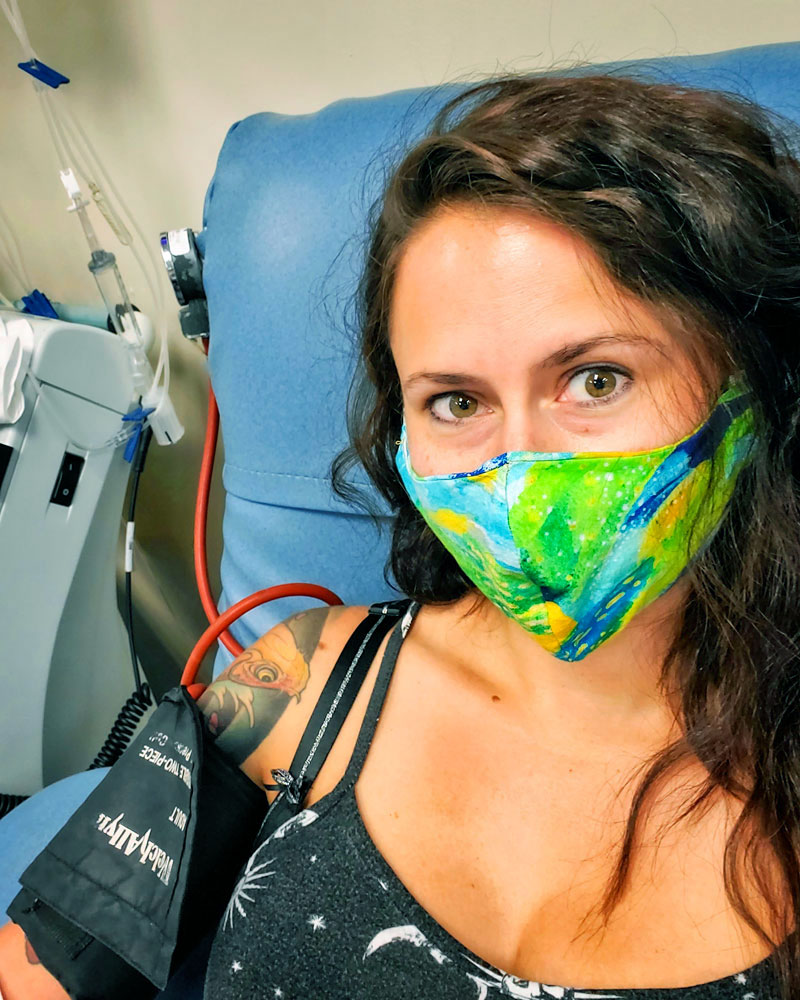Blood donations needed now more than ever
By Lisa Nicklanovich; photo by Krysta Parr

The Castle Pines Connection staff member Krysta Parr makes an apheresis donation, where special equipment collects red blood cells, plasma or platelets for the treatment of patients with cancer and other life-threatening medical conditions.
Winter is one of the most difficult times of year to collect enough blood products to meet patient needs, according to the American Red Cross. Cold weather, holiday schedules, and illness result in fewer donations during winter months – which is why January is National Blood Donor Awareness Month. Many blood drives had to be canceled in 2020 due to the pandemic, so donating blood now is more important than ever.
Blood and platelets, which promote blood clotting and help those with leukemia and other cancers, cannot be manufactured; they can only come from volunteer donors. About 38% of the population is eligible to donate, but less than 10% actually do. Donating blood is a simple and safe process.
Vitalant donation centers are located all around the Castle Pines community – in Highlands Ranch, Parker, Littleton and Denver. Vitalant, one of the nation’s oldest and largest nonprofit community blood service providers, supplies comprehensive transfusion medicine services to nearly 1,000 hospitals and health care partners for patients in need across 40 states.
To schedule a donation time, simply click the donate link on the website www.vitalant.org to choose a location, day and time. Eligibility requirements are listed on the site for those unsure if they can donate blood. Completing the health screening questionnaire online beforehand makes the check-in process shorter on donation day.
Social distancing practices are in place at all donation centers. Each donor will have their temperature taken and must wear a mask during the donation process.
After meeting with a staff member to review the eligibility questions, donations generally take approximately 15 minutes. After the donation is complete, enjoy a beverage and snack to replenish fluids and nutrients; allow an hour for the entire process.
All blood and platelet donations are currently being tested for COVID-19 antibodies. Donors can access information about their blood donation on the website through a client portal about two to three weeks after the donation.
For donors who have tested positive for COVID-19 and have recovered, their plasma may be able to help patients currently fighting the virus. Plasma is the liquid portion of the blood. Using a specialized process, the plasma portion is separated and collected while the remaining red blood cells and platelets are safely returned to the donor.
Although all blood types are needed, the most requested blood type by hospitals is Type O. This type of blood can be transfused to patients of all blood types, so it’s always in great demand and very short supply. Donating blood can save a life – or possibly more than one life as a single donation can potentially help more than one person.